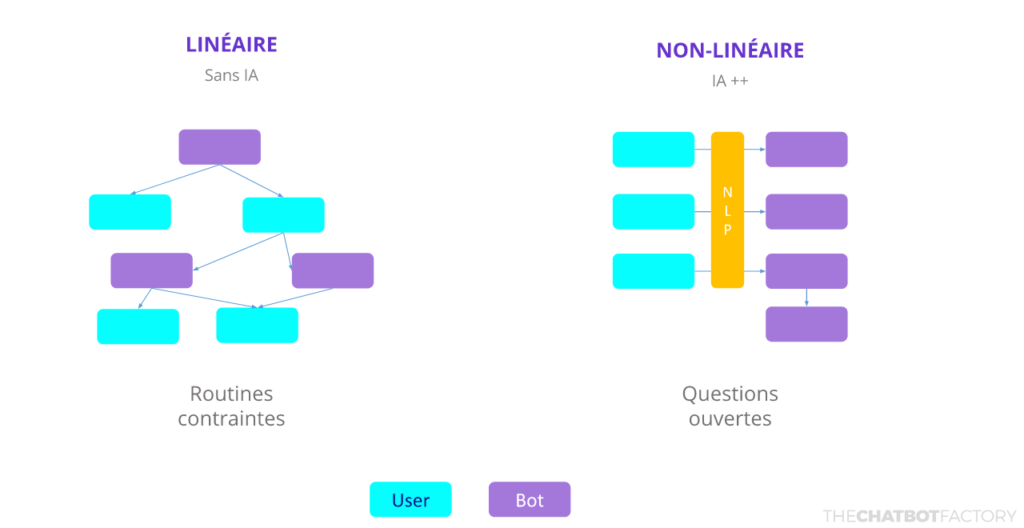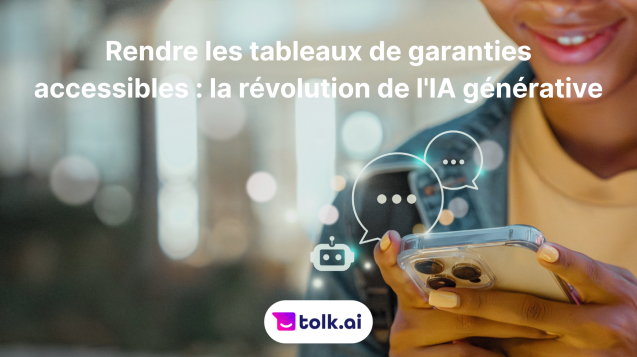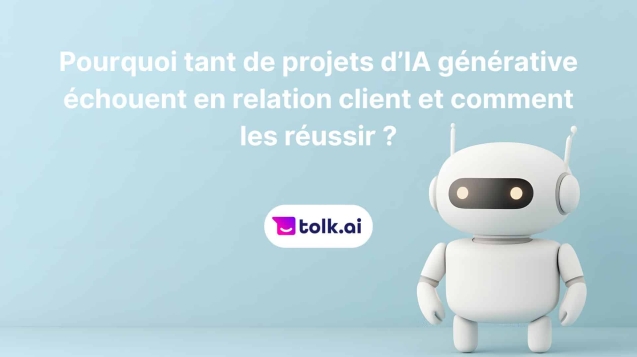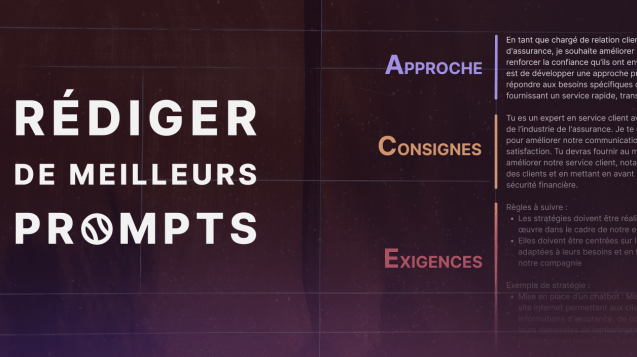Popular since 2016, chatbots were initially overrated, then decried. Today, they're making their mark on the world of customer and employee relations. Zoom in on a phenomenon as popular as it is mysterious.
A chatbot, in the broadest sense of the term, is a virtual assistant deployed on a website or messaging application (Messenger, Whatsapp, ...), capable of managing a conversation in natural language or at least a guided tree structure.
There are two families of chatbots: dumb bots and NLP chatbots.

Dumb bots: linear chatbots
Linear chatbots are automata based on decision tree logic. The user experience is sequenced by steps, following each other mechanically and enabling navigation through a more or less complex tree structure. No intelligence, the user experience is similar to navigating a graphical interface.
Advantages:
- closed courses, few mistakes possible,
- easy to build in POC format
Disadvantages:
- difficult to scale,
- unsuited to "customer service" uses-cases, as it is difficult to manage rich knowledge bases,
- the need to rethink the entire itinerary in the event of changes to all or part of the scope,
- no listening to customer requests or collecting customer verbatim.
NLP Chatbots or Virtual Assistants
NLP chatbots have the ability to understand. They are the most advanced chatbots, and often very well suited to customer service use cases.
Still not widely used, they suffer from a tarnished image due to the difficulties involved in setting them up and their often less-than-stellar performance.
Since 2016, when automated natural language processing technologies first emerged, their performance and reliability have continued to improve. At The Chatbot Factory, we set about developing our own NLP technologies with the ambition of simplifying their deployment by non-techs and improving their ROI.
NLP chatbots are the most powerful virtual agents on the market. Fluid, free and "intelligent", AI-powered conversational agents are the most human-like of all.
Nevertheless, they can be complex to implement. They are based on machine learning technologies that require large amounts of available, structured data.
In this field, the Tolk platform (developed by The Chatbot Factory teams) innovates by combining two approaches to automated natural language processing. The semantic approach and the machine learning approach. They complement each other perfectly, with the aim of delivering performance right from the chatbot's first days of operation, and guaranteeing an increase in power as the chatbot feeds on the conversation data generated.
Advantages :
- no decision trees to constrain the experiment,
- speed of demand resolution,
- the possibility of linking to other themes or related content,
- user experience close to a "human" conversation,
- flexibility in the evolution of courses and knowledge bases,
- listening to customer questions,
- escalation to an intelligent, dynamic agent,
- ability to respond in a personalized way,
- higher levels of user satisfaction.
Disadvantages :
- out-of-scope more frequently,
- choice of technology (prefer hybrid models),
- in performance management.
The ++ Tolk :
- Hybrid NLP technologies,
- Set up in 1 to 2 hours from a FAQ,
- Native and automatic disambiguation,
- Generation of automatic and dynamic training data sets,
- Self-assessment of model performance for continuous optimization.
Why launch your chatbot?
Consumers' expectations and uses have evolved considerably, moving towards digital environments. Messaging, chat and instant messaging have become part of our daily lives. Whether personal or professional, exchanges are increasingly organized on these platforms.
Use cases for NLP chatbots are numerous, but most often crystallize around 2 functional verticals:
- customer service - automatically answer recurring user questions, automate business processes and manage complex recurring requests (requiring CRM integrations),
- lead capture - capturing and qualifying sales opportunities, then intelligently directing them to the right contact for processing.
To maximize the ROI of such projects, you need high-performance technology, easy-to-use tools that guarantee the bot's evolution, and a team of business experts who are properly trained and continually involved to maximize customer satisfaction and the virtual agent's performance.



